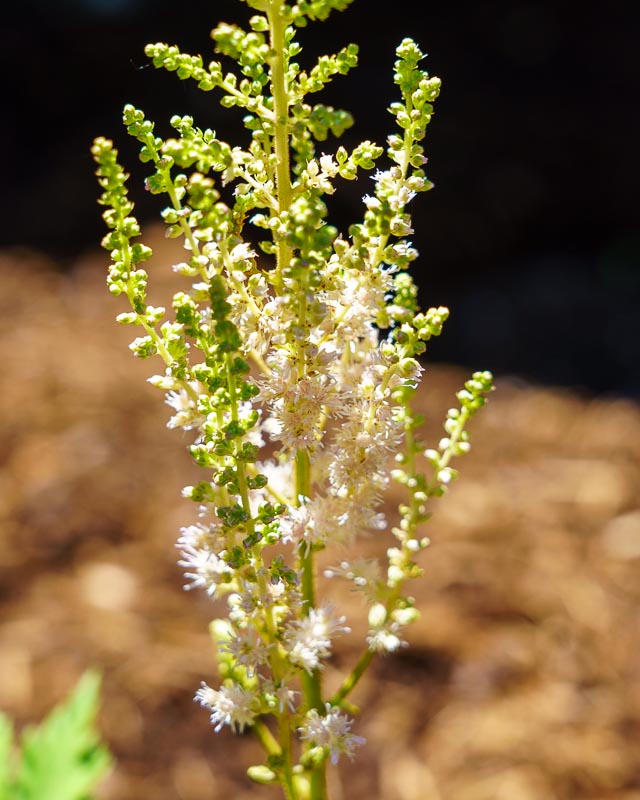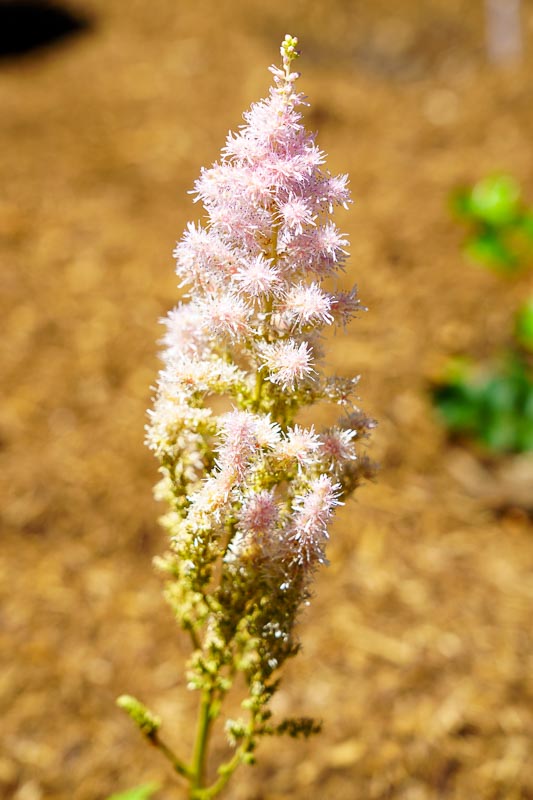'Milk and Honey' Chinese Astilbe
| Attribute | Value |
|---|---|
| Common Name | ‘Milk and Honey' Chinese Astilbe |
| Botanical Name | Astilbe chinensis |
| Mature Size | 28” - 30” tall; 18” - 20” wide |
| Sun Exposure | Partial shade, full sun |
| Soil Type | Loamy |
| Soil pH | 6.0 (slightly acidic) |
| Bloom Time | Mid to late summer |
| Flower Color | White |
| Care | Astilbe seed is available, but it can be difficult to germinate. It's easiest to start with a plant or division. Even a small plant will quickly fill out and perform well in its first year. In hot, dry climates, they need to be planted in the shade and/or given plenty of water. Different varieties will bloom anywhere from mid-spring to late summer. If you plant different types of astilbe, you can prolong the bloom almost all season. The plumes remain in flower for several weeks and continue to look good as they fade and dry on the plant. No deadheading is needed since they will not bloom again. |
| Soil | Astilbe plants prefer slightly rich, moist soil, with a slightly acidic soil pH of around 6.0. |
| Water | The warmer the weather, the more moisture astilbe plants need, especially when situated in full sun. They do not handle prolonged periods of drought well; the leaves will brown and dry, and if left dry too long, the plants will die. In the absence of rain, water astilbe weekly and deeply at the base, avoiding overhead watering. Keep the soil moist but not soggy. |
| Temperature and Humidity | Astilbe plants are tough and can survive winter, even in harsh climates. After the first hard frost, put down two inches of mulch around the stem to regulate the soil's temperature. |
| Fertilizer | Astilbe plants need phosphorus to bloom, so choose a fertilizer with the makeup of 5-10-5 or 10-10-10. Rake the fertilizer into the soil two weeks before you plant, or sprinkle a few granules onto the soil after the astilbe has been planted. Once the plant is established, fertilize every spring when the soil is moist but the leaves are not. |
| Pruning | Extremely little maintenance is required of astilbe plants. The flower heads will dry on the plant and remain attractive for many months. The flowers can be cut whenever they start to look ragged, or left up for winter interest and cut back in the spring. |
| Source | https://www.thespruce.com/growing-astible-plants-1402833 |

